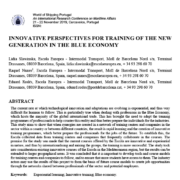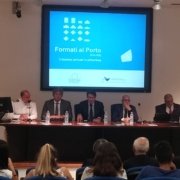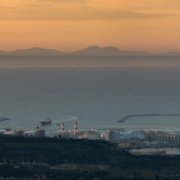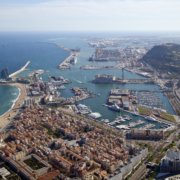Maritime Connectivity – what it means for the Mediterranean

Commentary by: Eduard Rodés,
Director – Escola Europea – Intermodal Transporrt
We live in an increasingly digital world – there is no doubt about that. Digital literacy and technical capabilities are skills that are now indispensable in employees in all sectors. But what geographical regions? The situation (in terms of skills, capabilities and infrastructures) in Spain is doubtlessly different from the situation in Tunis, just like the situation in Tunis is different from the situation in Bali. The countries’ individual geopolitical and industrial statuses affect how plugged in the countries can be to the globalised industries.
This brings me to a report that I wanted to share with you that CETMO has carried out on the maritime connectivity in the GTMO region. You can read our brief summary below, and then head to the CETMO website for the full report!
I highly recommend it!
A summary of the “Maritime Connectivity in the GTMO Region: Current Situation and Future Prospects” report by CETMO
This report was produced by the Centre for Transportation Studies for the Mediterranean Region (CETMO) in collaboration with the Western Mediterranean Group Of Transport Ministries (GTMO 5+5). It examined the current state of maritime connectivity in the GTMO region (which includes countries in the Mediterranean, Black Sea, and Caspian Sea areas[1]) and provided recommendations for improvement in the future.
Key Findings:
The GTMO region is a major hub for international maritime trade. Even so, significant gaps in maritime connectivity within the region have been identified, particularly in terms of digital connectivity and the integration of different transport modes. The COVID-19 pandemic in particular has highlighted the importance of digital connectivity and the need for greater investment in infrastructure and technology to support remote operations and data exchanges.
The report identified several key challenges and opportunities for improving maritime connectivity in the region:
- One of the main challenges is the digital divide between countries in the region, which can hinder the exchange of data and information among different actors in the maritime sector. The report recommended a range of measures, including increasing investment in port and logistics infrastructure, improving digital connectivity and data exchange, promoting the integration of different transport modes, and addressing regulatory barriers;
- Another challenge is the fragmentation of transport modes and logistics systems in the region, which can result in inefficiencies and higher costs for shippers and carriers. The report recommended promoting greater integration between different transport modes, such as rail and inland waterways, to improve the connectivity of the region and facilitate the movement of goods.
- The report also highlighted the importance of regulatory frameworks in facilitating or hindering maritime connectivity in the region. Some countries have regulatory frameworks that are favourable to investment and trade, while others have more restrictive policies that can discourage investment and limit market access. The report recommended promoting greater regulatory harmonization and cooperation between countries in the region to create a more conducive environment for investment and trade.
Conclusion:
Improving maritime connectivity in the GTMO region is essential for supporting economic growth, improving trade flows, and enhancing the resilience of supply chains in the face of future shocks such as pandemics or geopolitical tensions. To achieve this, a comprehensive approach that considers the diverse needs and capabilities of different countries and stakeholders is needed, one that involves governments, private sector stakeholders, and international organisations. By working together to address the challenges facing maritime connectivity, the region can enhance its economic competitiveness, promote sustainable development, and improve the resilience of its supply chains in the face of future shocks.
[1] Algeria, France, Italy, Libya, Libya, Malta, Mauritania, Morocco, Portugal, Spain and Tunisia









